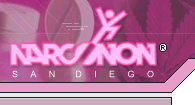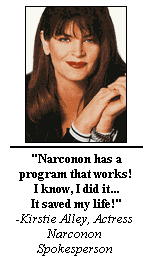

| 1-800-871-4350 |
| RESOURCES |
 |
Vicodin
Detox
Vicodin detox is not uncommon these days due the abundance of individuals who have fallen into prescription drug addiction. Of all the prescription medications currently abused, Vicodin has been found to be the most commonly abused. Many develop an addiction to Vicodin unknowingly when prescribed by a doctor for pain. As the individuals pain subsides and eventually ends they worry that if they were to stop taking Vicodin the pain might return. At this point the individual is now hooked on Vicodin and may fear withdrawing from it.
There are withdrawal symptoms associated with the discontinuation of Vicodin after an extended period of time. These withdrawal symptoms include: restlessness, muscle pain, bone pain, insomnia, diarrhea, vomiting, cold-flashes, goose bumps, involuntary leg movements, watery eyes, runny nose, loss of appetite, irritability, panic, nausea, chills, and sweating.
Detox from Vicodin should take place at a licensed treatment center. There, individuals withdrawing from Vicodin will be able to receive professional assistance during Vicodin withdrawal, Vicodin detox, and Vicodin Recovery.
Narconon's Vicodin detox method is designed to cover all the parts of an individual's Vicodin detox. The removal of Vicodin residues is a key point in Vicodin detox. Without this process Vicodin residues can remain in ones body and cause cravings for years after Vicodin abuse has ceased. A vital step in a successful Vicodin detox is flushing out the accumulated toxic residues so that the individual no longer experiences unwanted adverse effects from the Vicodin they have used.
Narconon's success rate of 76% is higher than other drug detox and rehabilitation program because we developed a complete drug detox program that works for the entire individual: mind, body, and soul.
The detoxification program is aimed at mobilizing and eliminating foreign compounds, such as Vicodin residues especially those stored in the fat. Components include:
(a) Exercise, preferably running, to stimulate circulation and enhance the turnover of fats.
(b) Prescribed periods in a low temperature sauna to promote sweating.
(c) An exact regimen of vitamin, mineral, and oil intake. Niacin in gradually increasing doses is used to transiently increase fat mobilization. Oil supplementation both reduces enterohepatic recirculation and promotes the exchange of fat. Vitamin and mineral supplements are included to replace vitamins, minerals and electrolytes lost during increased sweating and to correct any nutritional deficiencies.
(d) Sufficient liquids to offset the loss of body fluids through sweating.
(e) A regular diet including plenty of fresh vegetables.
(f) A properly ordered personal schedule which provides the person with the normally required amount of sleep.
Clients are on this program up to 5 hours per day, every day, until program completion. Daily aerobic exercise is followed by frequent periods in a low-heat (60-80 C) sauna. Niacin is administered immediately prior to the exercise and sauna to assist with the mobilization and elimination process. The program is pursued individually until a stable clinical improvement is achieved, generally from 4 to 28 days.
| Quote |

 |
| Link to Us! |
| Show your support, link to us! |
| Links |
 Murderer ordered to undergo drug detox
Murderer ordered to undergo drug detox
